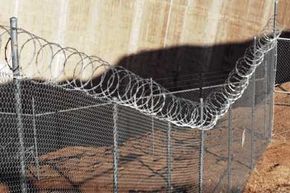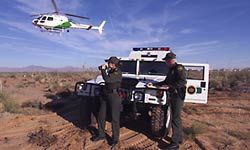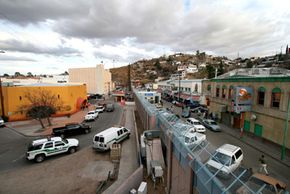In a test area near Sasabe, Arizona, a 28-mile section of the virtual border fence is set to go live. Developed by Boeing as part of a $70 million contract, the test fence, dubbed Project 28, will use a combination of physical fencing and "invisible technology" [Source: NPR].
This test section of the virtual fence is part of the larger Secure Border Initiative, designed to stop smugglers and illegal migrants along the United States' borders with Mexico and Canada. The Project 28 location was chosen in part because it's an area that has been riddled with smugglers.
Advertisement
To build its fence, Boeing has used fencing, vehicle barriers, radar, satellite phones, computer-equipped border control vehicles, underground sensors, 98-foot tall towers with high-powered cameras (including infrared cameras) and unmanned aerial vehicles. The tower-mounted cameras are extremely powerful; they have a range of more than 10 miles and the ability to determine if someone is armed from miles away.
Some parts of Project 28 have few or no visible measures in place, generally because it would be impractical to build a physical fence there, either because of cost or harsh terrain. However, the sections without visible fencing are reported to still be monitored by cameras, radar, underground sensors, Border Patrol agents and other technologies.
Next, we'll see how these various technologies work together to make a virtual border fence.
Advertisement




